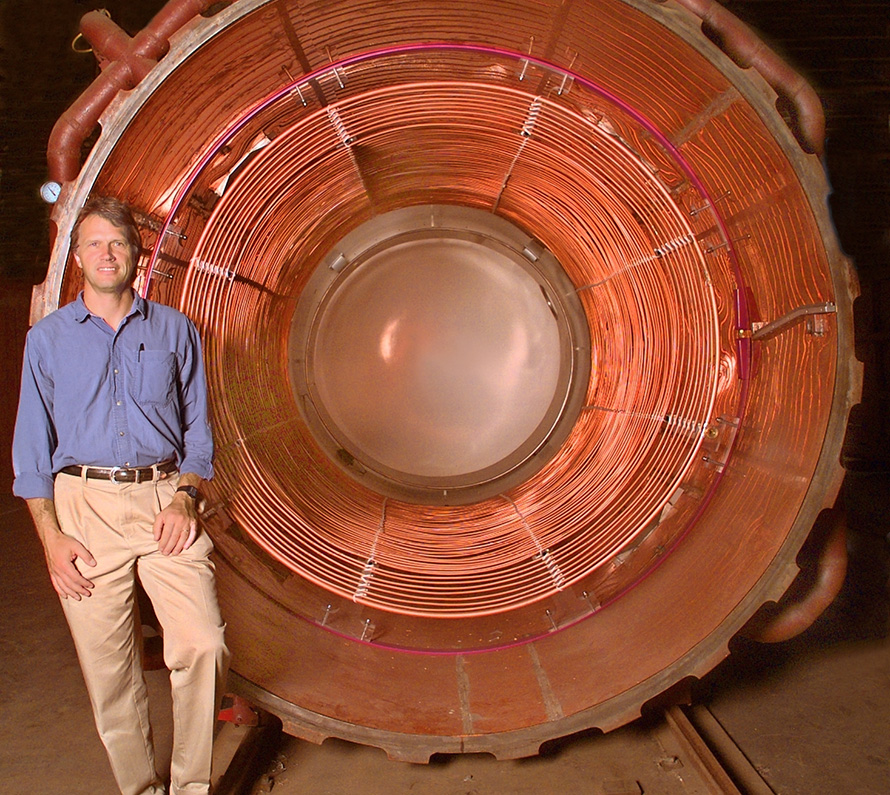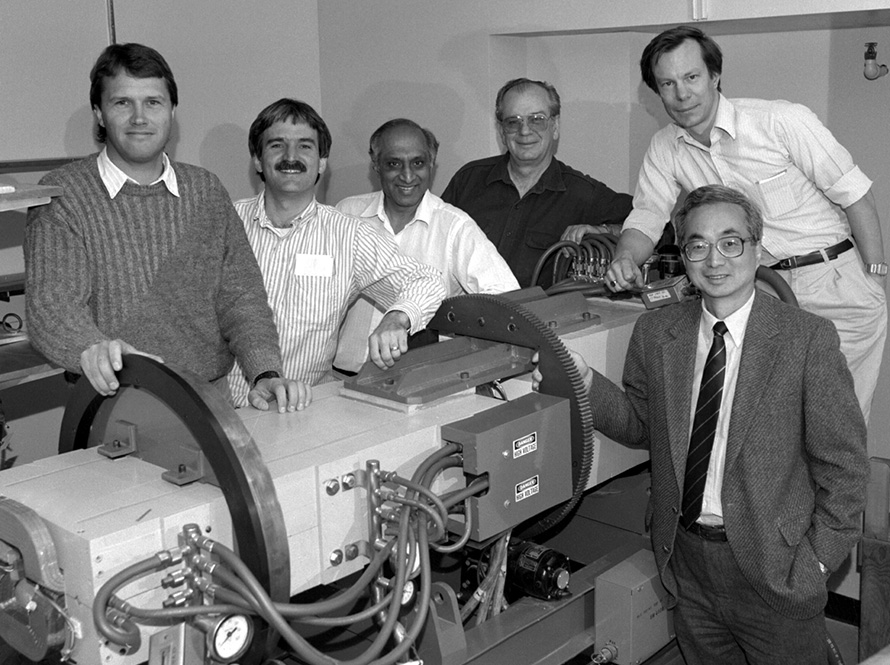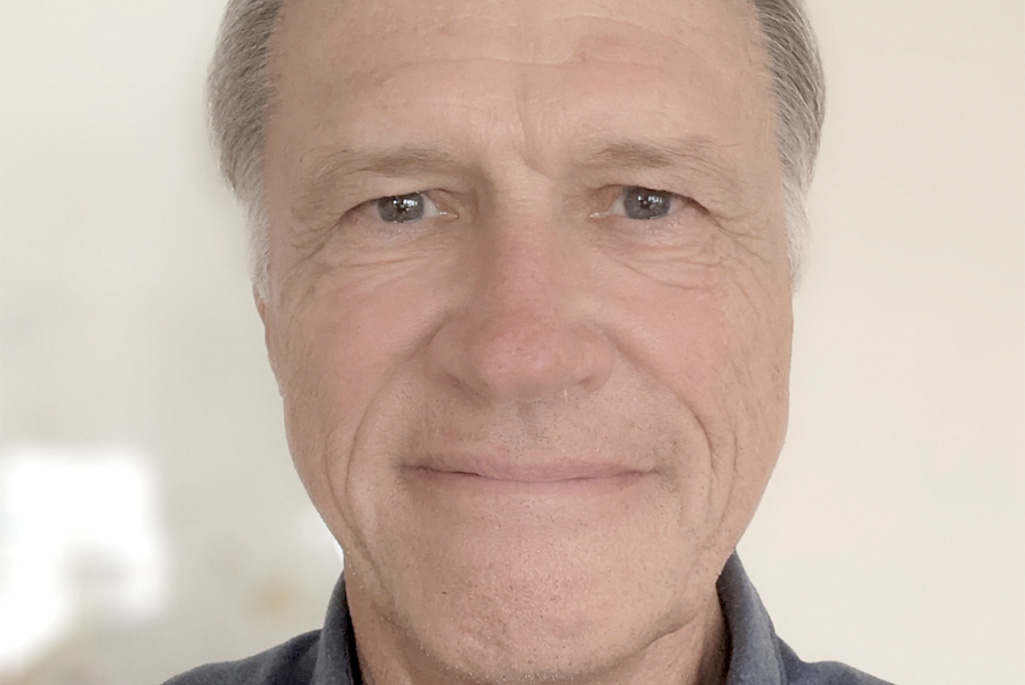Bernhard Ludewigt, a retired staff scientist in the Accelerator Technology & Applied Physics Division’s Fusion Science & Ion Bream Technology (FS&IBT) Program at Berkeley Lab, died on February 22, 2024. The Lab community sends condolences to his family and friends and honors his many contributions to advancing scientific research and the Lab’s mission and values.
Throughout his 30-year career at the Lab, Ludewigt, who retired in 2017, worked on a wide range of topics, including using proton and ion beams for cancer treatment, an approach pioneered at Berkeley Lab. This, among other things, led to him working directly with patients at the Lab’s Bevatron and Bevalac particle accelerators. A paper he co-authored with his frequent collaborators William T. Chu and Tim Renner, “Instrumentation for treatment of cancer using proton and light-ion beams,” has become a leading resource for the scientific community. He would later explore using neutrons for treating cancer, working on a technique called boron neutron capture therapy.

Ludewigt at the Boron Neutron Capture Therapy injector in Building 51B at Berkeley Lab in 2010. (Credit: Berkeley Lab)
“Bernhard was a great guy to be around and work with,” said Thomas Schenkel, a senior scientist and head of FS&IBT. “He always had a ready, broad grin and was always open to discussing experimental challenges and physics problems. His friendly smile and deep physics knowledge and experience will be sorely missed.”
The two met about 20 years ago when Ludewigt joined the Ion Beam Technology Program (now FS&IBT) in the Accelerator and Fusion Research Division (AFRD), ATAP’s predecessor. A few years later, Schenkel became Ludewigt’s supervisor. At the time, Ludewigt’s research focused on developing high-flux neutron generators for homeland security applications.
Schenkel said that Ludewigt’s interest in using neutrons for homeland security increased after 9/11, with “Bernhard developing several compelling ideas for high-flux neutron generators, many of which were built in AFRD. He also worked closely with Jani Reijonen and Mike King, former colleagues at Berkeley Lab and now industry leaders in active nuclear interrogation.”
Schenkel also recalled the time that—as part of their research on the radiation hardness of electronic devices—on a field trip to Sandia National Laboratories in New Mexico, Ludewigt wore “his signature black leather jacket, which made quite an impression on the folks at Sandia.”
In parallel to this work, Ludewigt also researched novel techniques such as nuclear resonant fluorescence (NRF) for scanning containers for nuclear materials or weapons and crossed paths with Brian Quiter, a young graduate student.

Bevatron Raster Scanner Magnet Design Group with Bernhard Ludewigt, Tim Renner, Rajinder P. (aka RP) Singh, Ronald Stradtner, Mark Nyman and William Chu. Photograph taken on February 28, 1989. (Credit: Berkeley Lab)
“Bernhard was my research advisor while I was a graduate student at UC Berkeley and was the principal investigator on the first projects I worked on when I joined the Lab as a project scientist in 2010,” said Quiter, now a staff scientist and deputy head of the Applied Nuclear Physics Program at Berkeley Lab.
“Bernhard and I performed the first-ever experiment to measure the NRF signatures of plutonium-240, and we were the first to demonstrate that transmission NRF could be a viable tool for quantifying actinide concentrations in thick targets like spent fuel bundles.”
Ludewigt and the team were recognized for this work in 2020 with the Secretary of Energy’s Achievement Award.
“Bernhard was very kind and frank,” Quiter continued. “He also liked to sit down and discuss ideas and made time to ensure we were on the same page both in understanding our scientific results and agreeing on the path forward for our research. We also bonded over soccer and skiing; working with someone as enthused as I was about a snow forecast in the Sierras was always fun.”
He added that their research on nuclear materials formed part of the science case behind the Berkeley Lab Laser Accelerator Center’s MeV photon source and the kBELLA initiative, a future facility at the BELLA Center that aims to harness the power of laser-plasma accelerators for applications in discovery science, medicine, and industry.
“Bernhard was one of my mentors in studying the applications of plasma-based accelerators to nuclear nonproliferation and broad applications,” said ATAP Division Director Cameron Geddes. “His deep knowledge of sensing applications and curiosity about how new techniques could open up previously inaccessible applications were important in starting this area of research at the Lab.”

Following his retirement, Ludewigt was rehired by the Lab and continued to pursue his scientific interests, support important research at the Lab, and guide young scientists and students.
For example, his expertise and deep knowledge of neutron generators were leveraged by Arun Persaud, a staff scientist and deputy head of FS&IBT, who is exploring the use of Associated Particle Imaging—a nuclear imaging technique that uses neutrons and gamma rays to create images of the inside of objects. The work could lead to a faster, more accurate, and cost-effective way of measuring and verifying soil carbon. It would support broader efforts such as the Carbon Negative Shot in the U.S. Department of Energy’s Carbon Negative Shot initiative and the Biden Administration’s net-zero greenhouse gas emissions goal.
“It was great working with Bernhard,” said Persaud. “He knew a lot about everything related to neutrons, from neutron generators to gamma detectors, and his input was essential to achieving major milestones for the project and was invaluable during the follow-up projects.”
According to Qing Ji, a staff scientist and head of ATAP’s Berkeley Accelerator Controls & Instrumentation Program, who also worked with Ludewigt on neutron generators and their applications, he was “not just a colleague and a dedicated collaborator, but a valuable mentor.”
“Bernhard generously offered advice and conducted mock-up presentations to help me navigate work-related challenges. His kindness and guidance left a lasting impact, enriching our collaborative endeavors and my professional growth.”
To honor and celebrate Ludewigt’s life and contributions to science, his colleagues and friends at the Lab plan to hold a memorial service this month in Building 71. For further information on the service, contact Arun Persaud.
For more information on ATAP News articles, contact caw@lbl.gov.
